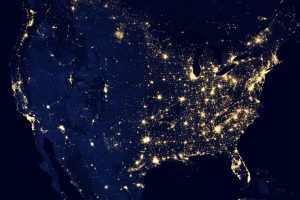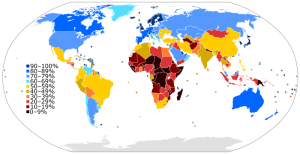Closing the digital divide – how filtered data shapes society.
By Anonymous | October 27, 2022

You send a text, like a post, make an online purchase, or check your blood pressure on your smart device. The data you produce from these activities shapes ideas, opinions, policies, and more. Given this tremendous influence on society, data ingested by any means must be representative of all populations.
In reality, as of 2018, more than 20% of people in the United States are without Internet access (FCC, 2020), and as of 2021, only 63% globally are accessing the Internet (Statista, 2021).
Data is at the heart of decision-making. In the field of Data Science, Data Scientists rely on data to inform decisions in many industries that impact our daily lives, from Healthcare, Fraud Detection, Logistics, Transportation, etc. With such an influence on so many aspects of our daily lives, it’s critical for the technology we use to be inclusive and data-representative of all populations. Unfortunately, to a certain degree, Data Scientists are operating with a filtered view of the world based on the usage of data that’s not representative of all populations.
Data Scientists require data that will bring new insights to the world. Data points are carefully selected to feed algorithms that produce meaningful outcomes that benefit society. The fundamental problem with this is that the technology creating the input data is not in the hands of individuals equally among all populations, thus producing exclusionary data. Without fair representation, populations’ chances of influencing societal decisions do not exist. Reasons for this include a lack of affordable digital technology, physical disabilities that prevent technology from being accessible, and environments without Internet access.
While rural areas lack Internet access, Tribal lands, in particular, are severely impacted by the digital divide. In a study published by the FCC, as of 2018, “22.3% of Americans in rural areas and 27.7% of Americans in Tribal lands lack coverage from fixed terrestrial 25/3 Mbps broadband, as compared to only 1.5% of Americans in urban areas.”
Encouraging support has come recently from the USDA and FCC. The USDA’s ReConnect Program, has since 2018 invested “over $1 billion to date to expand high-speed broadband infrastructure in unserved rural areas and tribal lands.” The Affordable Connectivity Program provides discounted Internet services to lower income families.

“Internet users in 2015 as a percentage of a country’s population”
Source: International Telecommunication Union. Wikipedia.
Before data driven decisions can be made, the data the must be inclusive of all populations. We need to increase deployment of infrastructure to enable Internet access in underserved communities and increase access to technology for those who are without. Below are a few volunteer resources if you’d like to help close the digital divide:

Photo by Alexander Sinn on Unsplash
References
- 2020 Broadband Deployment Report. Federal Communications Commission. FCC
- ReConnect Loan and Grant Program. U.S. Department of Agriculture. ReConnect
- List of countries by number of Internet users. Wikipedia
- Affordable Connectivity Program. Federal Communications Commission. FCC
- Percentage of global population accessing the internet from 2005 – 2021, by market maturity. Statista, 2022. Statista
